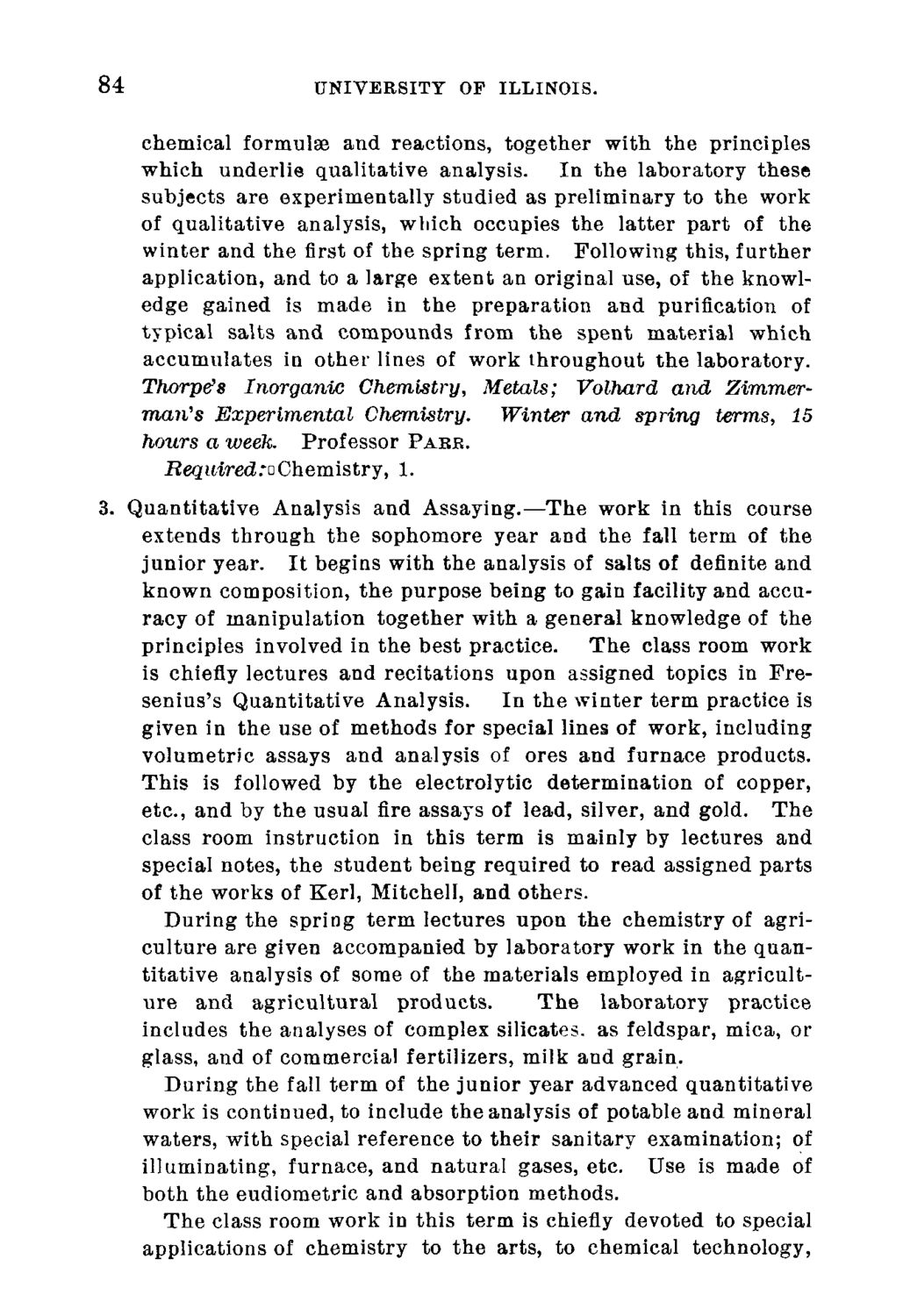| |
| |
Caption: Course Catalog - 1891-1892
This is a reduced-resolution page image for fast online browsing.

EXTRACTED TEXT FROM PAGE:
84 UNIVERSITY OP ILLINOIS. chemical formulae and reactions, together with the principles which underlie qualitative analysis. In the laboratory these subjects are experimentally studied as preliminary to the work of qualitative analysis, wliich occupies the latter part of the winter and the first of the spring term. Following this, further application, and to a large extent an original use, of the knowledge gained is made in the preparation and purification of typical salts and compounds from the spent material which accumulates in other lines of work throughout the laboratory. Thorpes Inorganic Chemistry, Metals; Volhard and Zimmerman's Experimental Chemistry. Winter and spring terms, 15 fwurs a week. Professor PABE. Requiredra Chemistry, 1. 3. Quantitative Analysis and Assaying.—The work in this course extends through the sophomore year and the fall term of the junior year. It begins with the analysis of salts of definite and known composition, the purpose being to gain facility and accuracy of manipulation together with a general knowledge of the principles involved in the best practice. The class room work is chiefly lectures and recitations upon assigned topics in Fresenius's Quantitative Analysis. In the winter term practice is given in the use of methods for special lines of work, including volumetric assays and analysis of ores and furnace products. This is followed by the electrolytic determination of copper, etc., and by the usual fire assays of lead, silver, and gold. The class room instruction in this term is mainly by lectures and special notes, the student being required to read assigned parts of the works of Kerl, Mitchell, and others. During the spring term lectures upon the chemistry of agriculture are given accompanied by laboratory work in the quantitative analysis of some of the materials employed in agriculture and agricultural products. The laboratory practice includes the analyses of complex silicates, as feldspar, mica, or glass, and of commercial fertilizers, milk and grain. During the fall term of the junior year advanced quantitative work is continued, to include the analysis of potable and mineral waters, with special reference to their sanitary examination; of illuminating, furnace, and natural gases, etc. Use is made of both the eudiometric and absorption methods. The class room work in this term is chiefly devoted to special applications of chemistry to the arts, to chemical technology,
| |